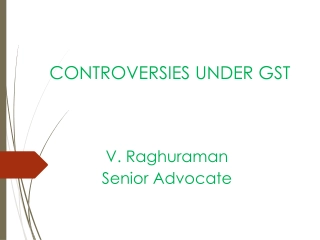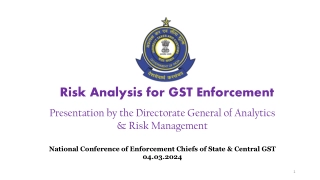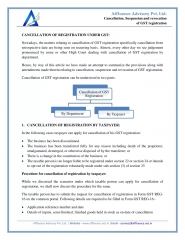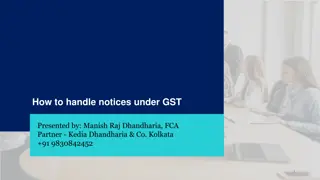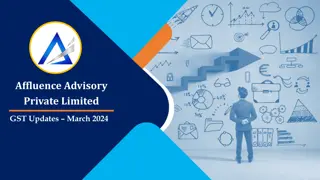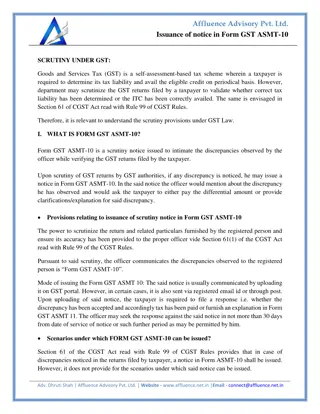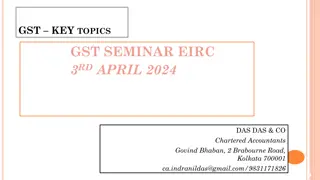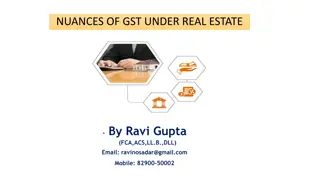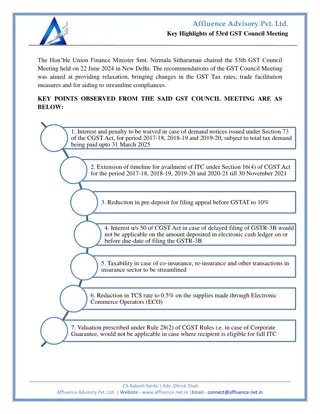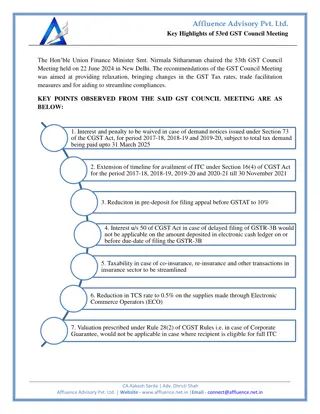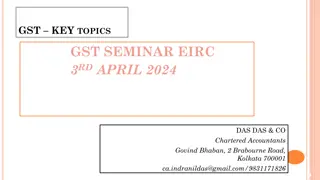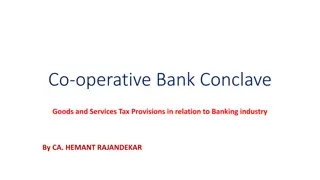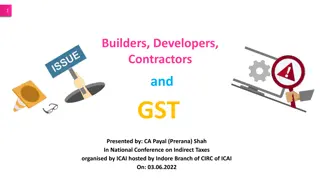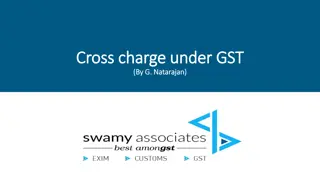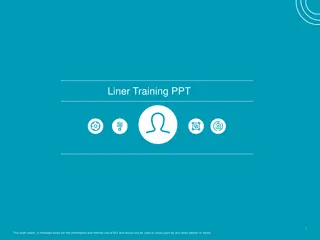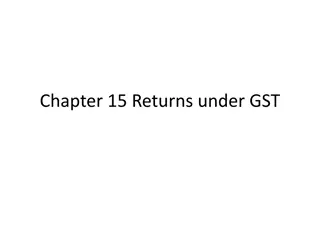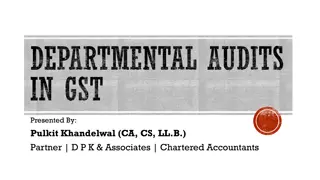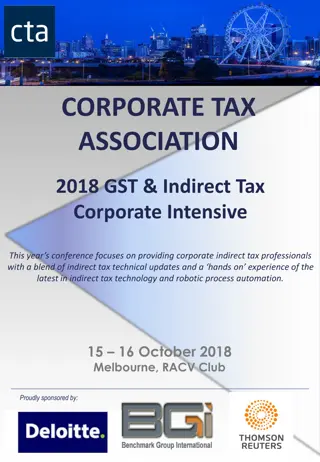
GSTN: Providing Efficient IT Infrastructure for GST Implementation
"Explore how GSTN, established under section 25 of the Companies Act, 1956, is dedicated to providing shared IT infrastructure and services to streamline GST implementation, enhance tax compliance, and facilitate inter-state trade. Discover its role in harmonizing business processes, ensuring taxpayer convenience, and promoting tax collection efficiency."
Download Presentation

Please find below an Image/Link to download the presentation.
The content on the website is provided AS IS for your information and personal use only. It may not be sold, licensed, or shared on other websites without obtaining consent from the author. If you encounter any issues during the download, it is possible that the publisher has removed the file from their server.
You are allowed to download the files provided on this website for personal or commercial use, subject to the condition that they are used lawfully. All files are the property of their respective owners.
The content on the website is provided AS IS for your information and personal use only. It may not be sold, licensed, or shared on other websites without obtaining consent from the author.
E N D
Presentation Transcript
Incorporated on 28thMarch 2013 Under section 25 of the Companies Act, 1956 As a private limited company Promoted jointly by the Central & State Govts with the following equity Structure Central Govt EC and State Govts Pvt Financial Institutions 51.0% 24.5% 24.5%
Provide shared IT infrastructure and services to Central and State Governments & tax-payers for implementation of GST Common Registration, Return Filing and e-Payment services Integration of Common GST Portal with existing tax administration systems Build efficient and convenient interfaces for tax-payers Assist tax authorities in plugging tax evasion Promote best practices and provide training to stakeholders Assist States who do not have requisite IT capabilities by providing them with back end modules
Being destination based tax, inter-state trade of goods and services would need a robust settlement mechanism among the states and the Centre. This is possible only when, there is a strong IT infra and services backbone, which enables Capture, Processing and Exchange of information amongst stakeholders (taxpayers, state, central govt, Banks and RBI)
GST System will cater to 65 lakh taxpayers 32 tax administrations (Central Govt, 29 states, 2 UTs) It will be one-stop-shop for the key needs of taxpayers of the entire nation
To be developed, operated and maintained by GSTN It will be a pass through portal It will do ITC claim processing/settlement based on sales and purchase data filed by paired dealers It will be tightly integrated with State/Central Tax systems. It will also have data on past years for the taxpayers (one point contact for dealers)
Harmonization of Business Processes and Formats Autonomy of back-end systems of States and Centre Common & Shared IT Infrastructure Centre/States Tax IT Systems IT Interfaces Non-Statutory Functions Core Services Helpdesk support Information on Inter-State supply and cross-credit utilization (IGST Settlement) Tax Payer Profiling Statutory Functions Approval of Registration Assessment Refunds Audit and Enforcement Adjudication Internal workflows to support above functions Registration Returns Payments
States/CBEC to develop their own backend modules and exchange data with GST common portal using APIs over a secured network Data Center APIs
GSTN to develop backend modules for States & host the same at central data center location Data Center Backend Modules 1 State 1 GST State 2 Backend Modules 2 WAN Network Common Portal State n Backend Modules n Access to States over a secured network.
Existing VAT/ Service Tax/ Central Excise dealer data will be migrated to GST system No need of fresh registration for existing dealers Work on migration of data is in progress Challenges Different formats in use for VAT, Service Tax & Central Excise Each dealer will be given unique ID (GSTIN) Modalities for conveying GSTIN, User ID and Password being discussed with Central & State Govts
GST Common Portal will be the single window for registration of new dealers New dealers will apply at the GST Common Portal online Applications received will be transmitted online to tax authorities Approval will be granted within a defined time frame On approval, GSTIN, User ID and password will be assigned online
All returns will be submitted at the GST Common Portal Common Return format for taxpayers all over India Monthly verification and settlement of ITC claims by matching transactions reported in the returns filed by seller and purchaser
GST Portal will enable payment of GST through a variety of modes such as Internet banking Debit and Credit cards OTC payment in Agency Banks Payment through RTGS/ NEFT from other banks Integration of GST System with 30 Agency banks for internet payments Multiple gateway operators for card payments
GST Common Portal will maintain and display the Taxpayer Ledger Each taxpayer will be able to access his own Ledger 24x7 Ledger will give information such as Tax liability, tax dues & tax deposited Input tax credit earned & utilised Refund granted Interest and Penalty
GST Portal will provide a common system for intra-state and inter-state transactions Taxpayers to report all transactions of a tax cycle, including inter-state transactions, in a common return format GST Portal will act as the clearing house for inter-government settlement between the Centre and States
Bihar Nagaland Orissa Meghalaya Uttar Pradesh Arunachal Pradesh Delhi Tripura Manipur Mizoram

